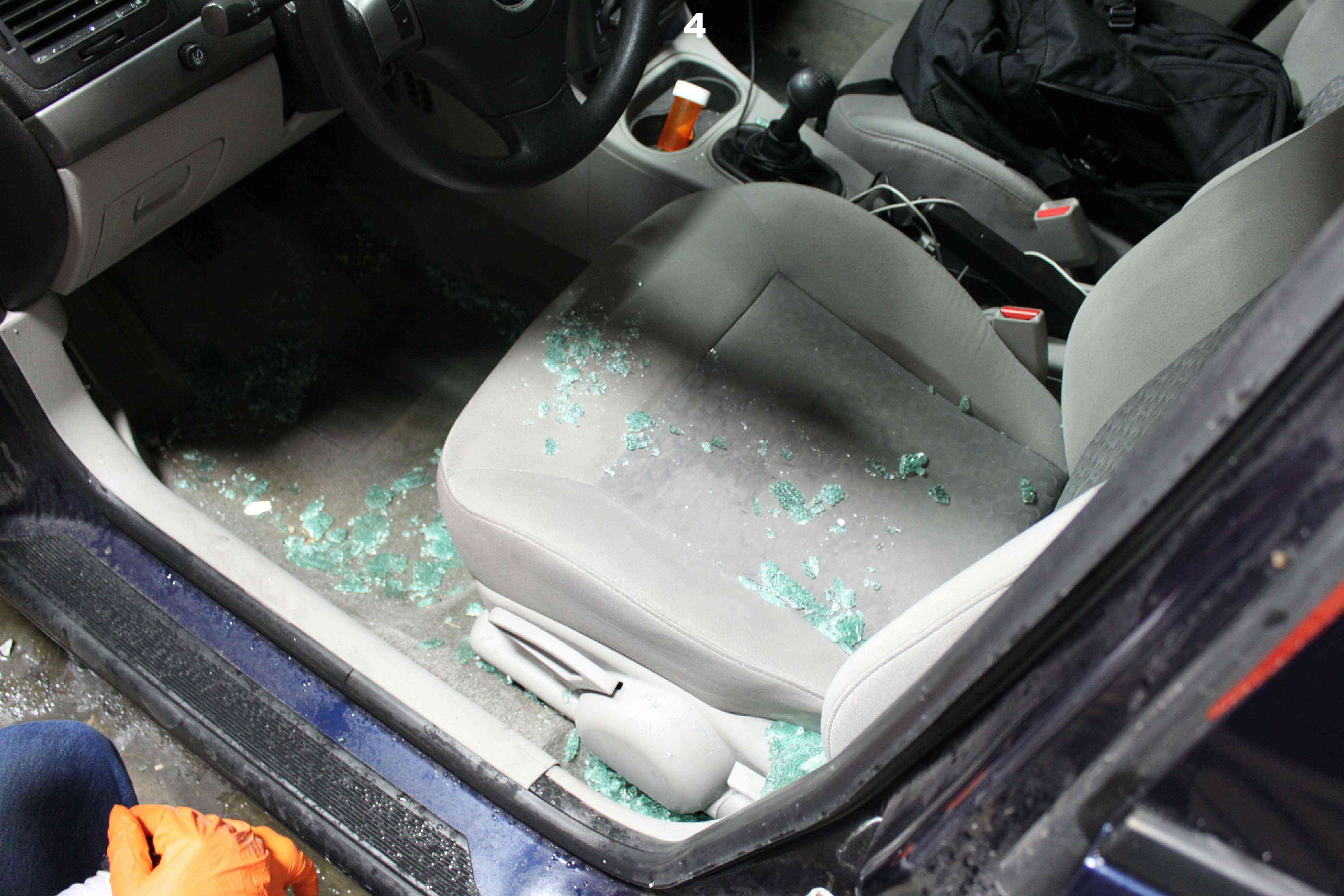


From the photographs below, it is clear that a considerable amount of glass was scattered and dispersed throughout the interior of Knospler's vehicle; from the dashboard, to the floor behind the front seat, and from the driver's side door to the passenger's side door, and even into the map pouch of the passenger's side door panel. Literally, the entire front passenger compartment was strewn with glass particles, with the heaviest concentration in the immediate vicinity of the driverís seat.
During the trial, the prosecutor referred to the amount of glass that was found on the ground, outside the vehicle, as "piles" of glass. The State placed the glass collected from the parking lot into evidence, and an investigator from the police department, on the witness stand, was asked to quantify the amount of glass found on the ground. He poured the glass from a paper bag into a plastic container and testified that it was about 1/2 of a coffee cup full. This evidence was passed around to the jury for their inspection. Never was the glass from inside Knospler's vehicle, collected and presented to the court for equal scrutiny and evaluation.
One might ask the prosecutor, "How much glass is in a "pile", and how many "piles" was he talking about. The use of the word "piles" is mis-leading, deceptive and hyperbolic, and is clearly intended to leave a jury with the impression that there was a great deal more glass outside of the car on the ground, than anywhere else, and implying or inferring at the same time, that this condition could only result from a gun shot fired through a closed window.
Was the word "piles" and its implications said purposely and with intent, or did it somehow accidentally emit from his mouth without his knowledge? A "misleading lie" is generally defined as an intentional attempt to mislead or deceive or to cause another person to reach a conclusion contrary to the truth. A prosecutor is not only an advocate for the State, but also a minister of justice. Would the prosecutor's remark then constitute a lie and qualify as prosecutorial misconduct?
In order to evaluate this evidence quantitatively, would not an unbiased investigator collect all the glass found on the ground and all the glass found inside the car and express each as a percentage of the total amount of glass recovered. It is understandable that the prosecutorís investigators would not be inclined to pursue a rigorous study of the glass evidence, as that could only damage the prosecutorís case by proving that the force applied from outside the car, when the window was punched in by the victim, forced more glass into the car, (in the direction of the applied force) than subsequently fell outside the car while gaining entry to the vehicle. Additionally such a study would deprive the prosecutor of the word "piles", and the ambiguity he relied on. The jurors only heard about "piles" of glass found outside the car.
One might make the case that the defense can still make a through quantitative evaluation of glass evidence, and if the total glass recovered does not reasonably equal the weight of a replacement window, then the missing glass would have been inside the vehicle to begin with, and lost on the road such as when Knospler was stopped by the police and arrested, during the transportation and impoundment of the car. Then at the interrogation procedures when Knospler was noted removing glass from his pockets, off his person and placed on a table in the interrogation room at the police station.
Mr. Daily of Jackson Hole Investigations Inc. was engaged by the State to investigate the glass issue. His opinion and testimony are that the dispersion of glass within the car is consistent with a window "punched in" from the outside, and lacerations on the hand and arm, up to the shoulder, of the victim were consistent with the kind of cuts one receives by the cubic shape of tempered automobile glass (dicing).
A bullet does not break a tempered glass window in the same way that a fist does. A bullet makes a small hole and carries a shower of fine glass particles forward at a high velocity. At close range the particles embed in clothing and skin, causing a stippling of the skin in the vicinity of the entrance wound. There was no evidence of this condition or of small glass fragments or particles found on the victim. From this we can conclude that the bullet did not pass through a glass window before it struck the victim.
From all this we can further conclude that the car door was locked, for who would proceed to beat a window in with his bare fist if the door was unlocked?

Picture 4 - Shows the driver seat covered with glass that Knospler was sitting on when arrested. One can depict the out line of where his left and right leg were by the accumulation of glass in the center of the seat. His Back Pack is seen to the right with the top flap open and the beaver tail of Knospler's .45 clearly visible. Note the center consol contains a container that tested positive for Marijuana residue.
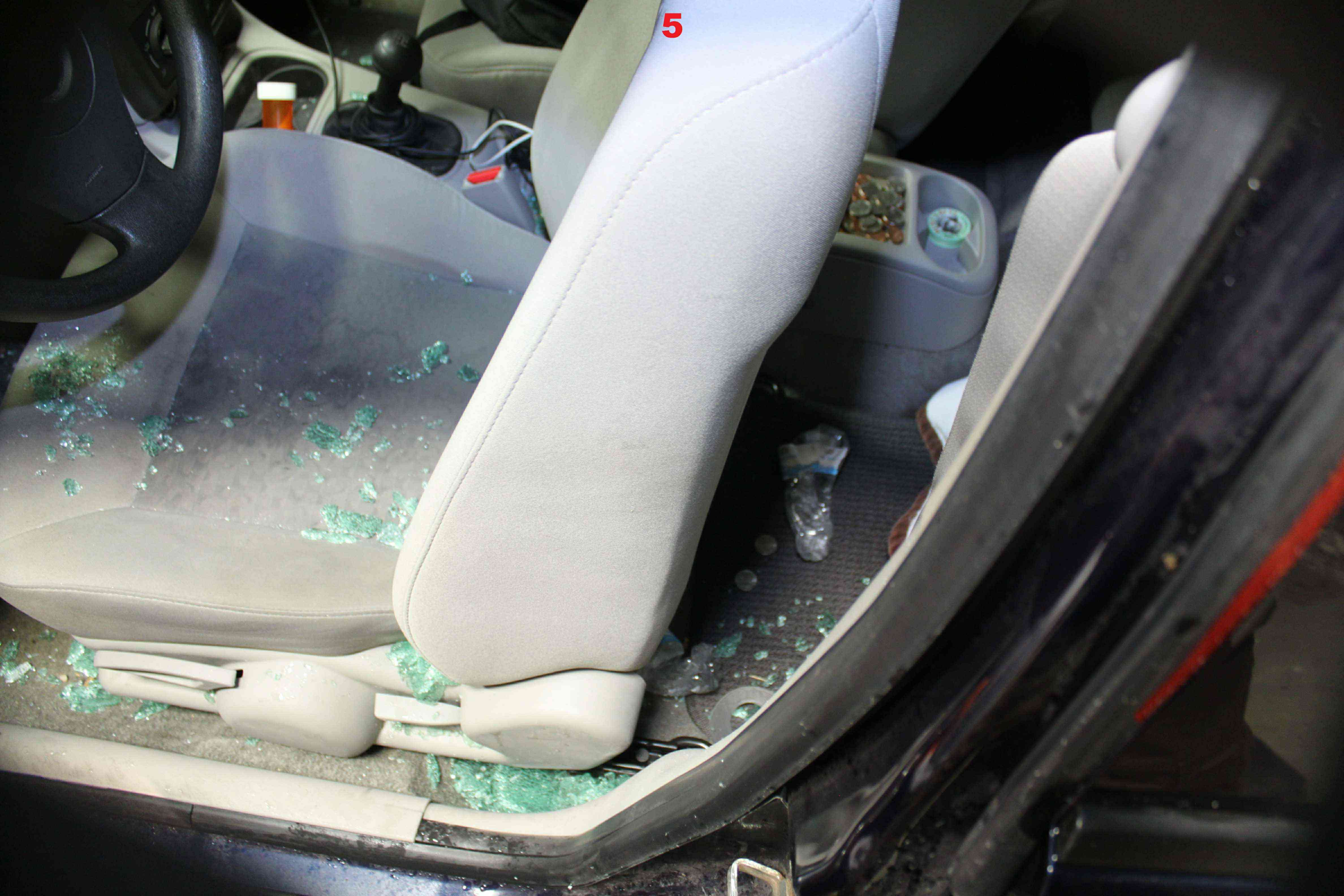
Picture 5 - Shows the driver's seat slid forward by investigators. Glass can be seen behind and underneath the seat as well between the door and the seat.

Picture 6 - Shows a view from passenger side door. Note the glass on passenger side floor, on top of Back Pack and on the dash board. The driver's seat is still positioned forward.
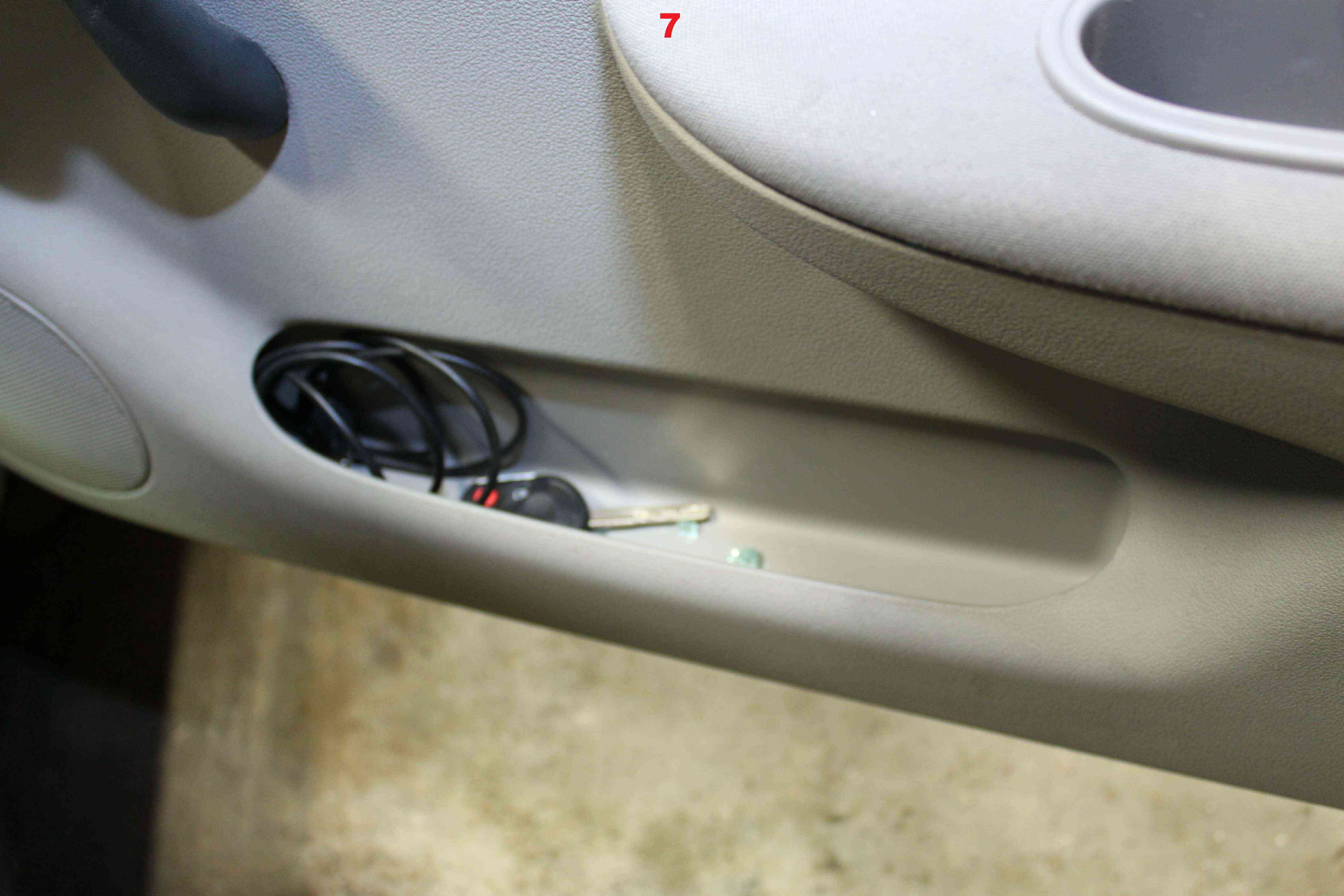
Picture 7 - Shows the passenger door side pocket containing a key, glass shards and what appears to be a cell phone charging cord.
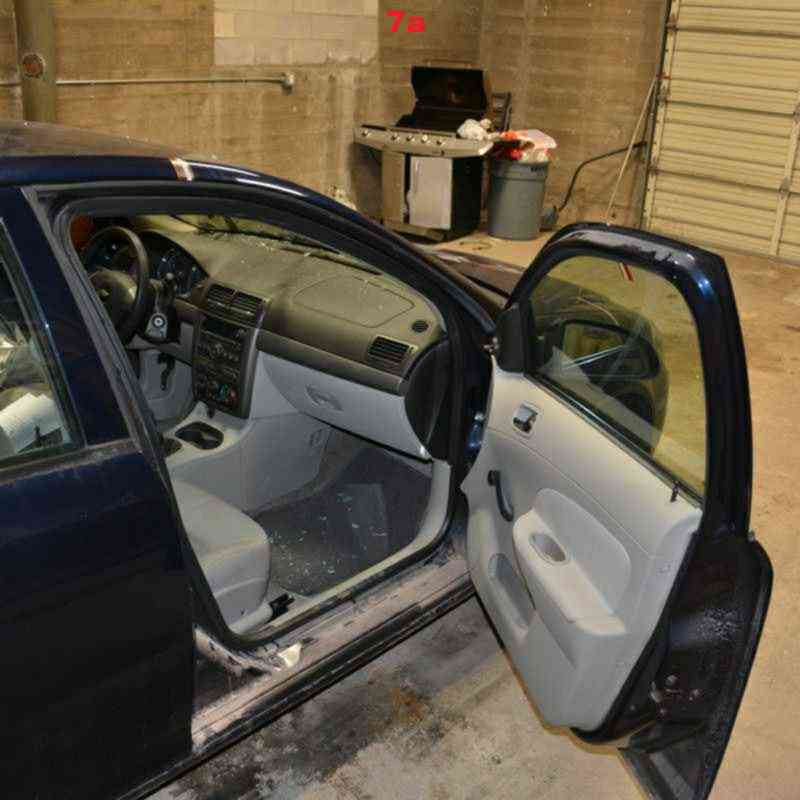
Picture 7a - Shows the distribution and dispersion of glass shards across the dash board, on passenger side floor, and in the passenger side door side pocket; the key and charging cord have been removed from the side pocket.
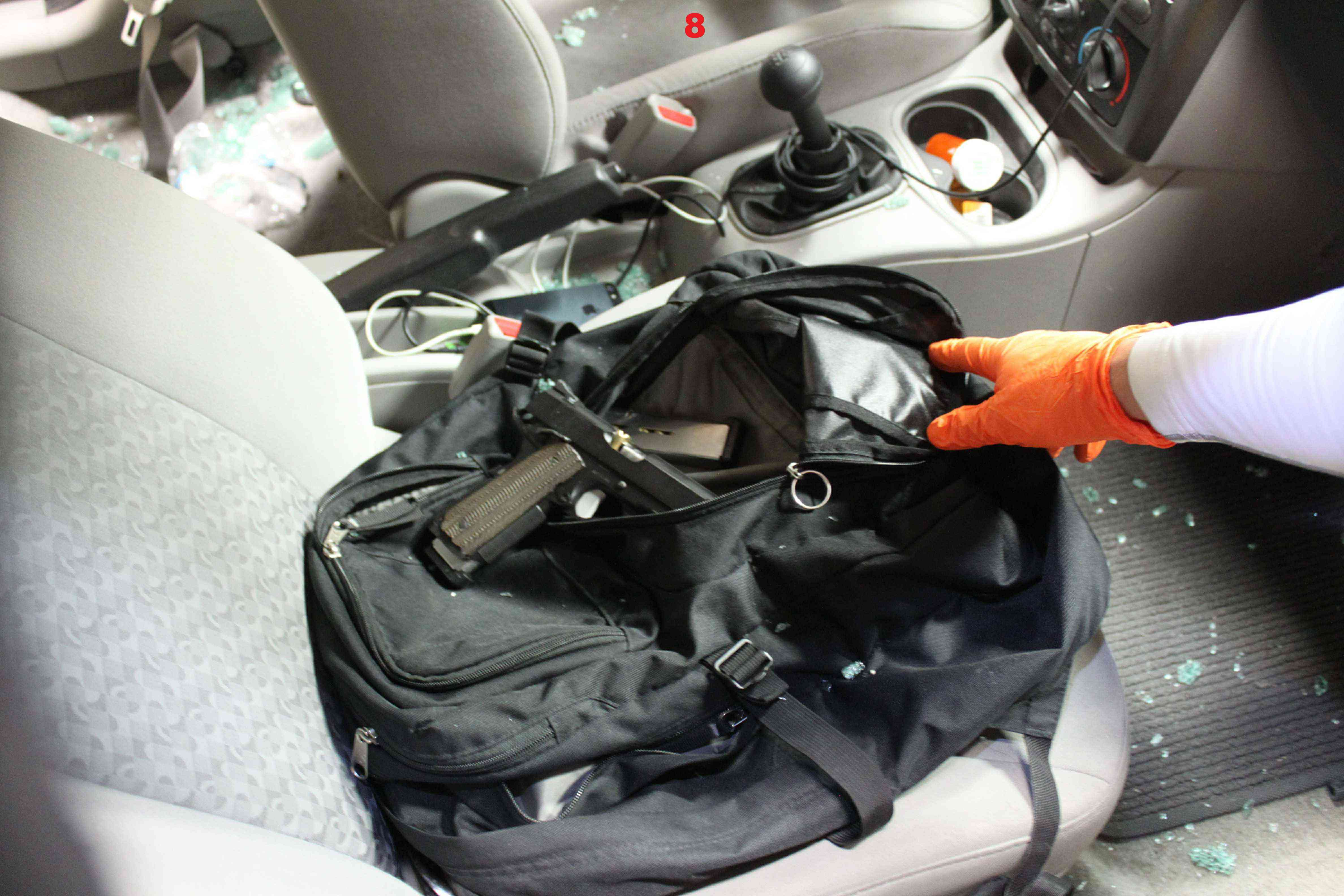
Picture 8 - Shows Knospler's .45 in a stove-piped condition and magazine clip released. Note the glass shards on top of the Back Pack flaps, in the wrinkles of the fabric, in boot of the shifting lever and in the center console pocket behind the shifing lever.

Picture 9 - Shows the vehicle at 1st Street and Wolcott, after arrest was made. Note glass shards in the air vents and in the speedometer tunnel. During the trial, John Daily of Jackson Hole Investigations Inc, testified that "natural dispersion of glass across the dash board was consistent with an impact from outside the vehicle".
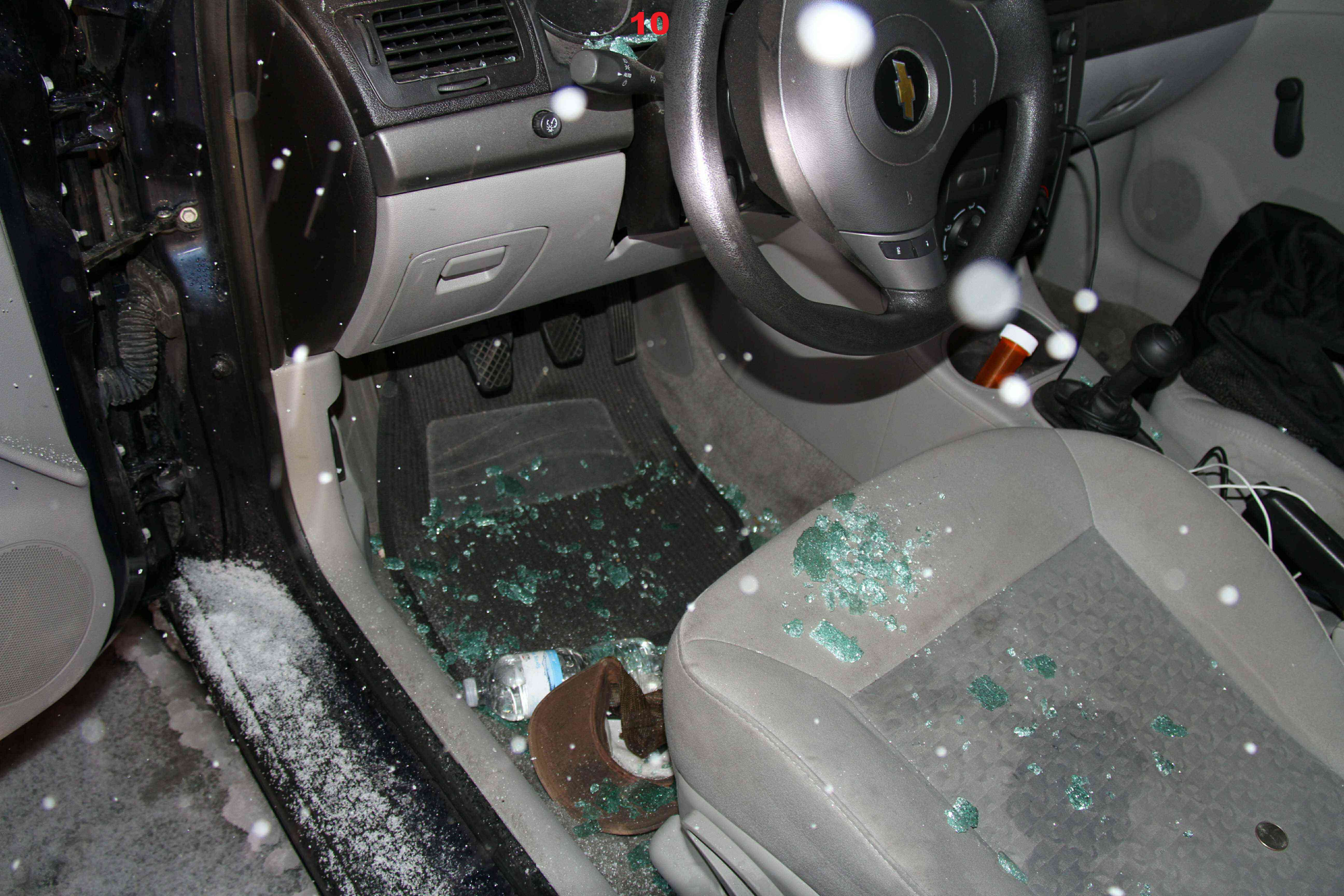
Picture 10 - Shows the vehicle at 1st Street and Wolcott, after arrest was made. Note the glass shards across diver's side floor, inside a hat on seat, inside the air vents and inside the speedometer tunnel.

Picture 11 - Shows the driver's side door with an investigator using a GSR kit. Note that NO GSR was found on the driver's side door and was noted during trial. Had Knospler shot through the window as the prosecution claims, GSR would have been present. Baldwin's body extended through the window to his midsection thereby shielding the upper door panel from GSR with his stomach. When zoomed in note the scrapes on the top of door panel just under the GSR kit being held by investigator. Did these scratches come from Baldwins belt buckle while he was attempting to gain entry into Knosplers vehicle?
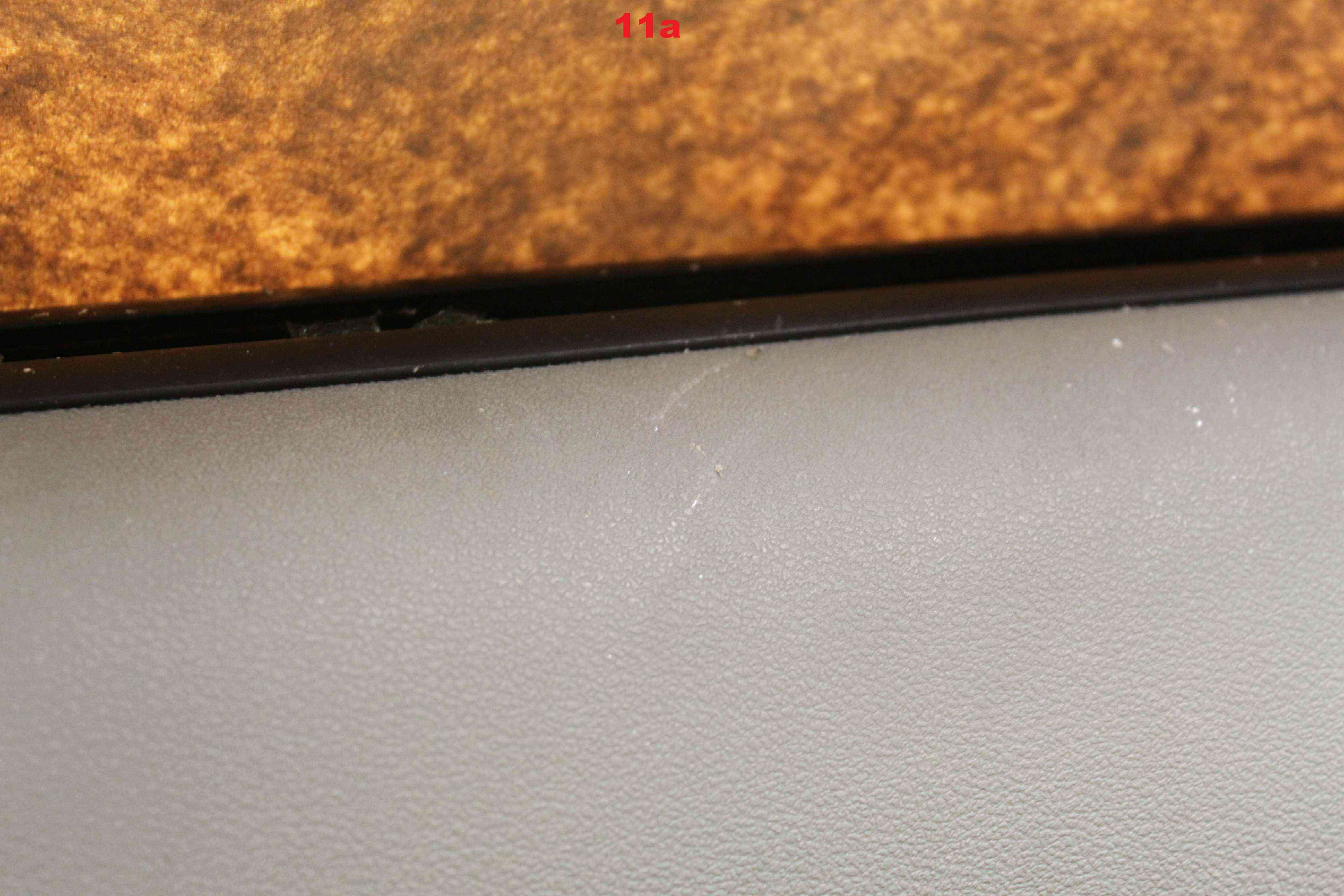
Picture 11a - Shows close up of scrapes on door panel